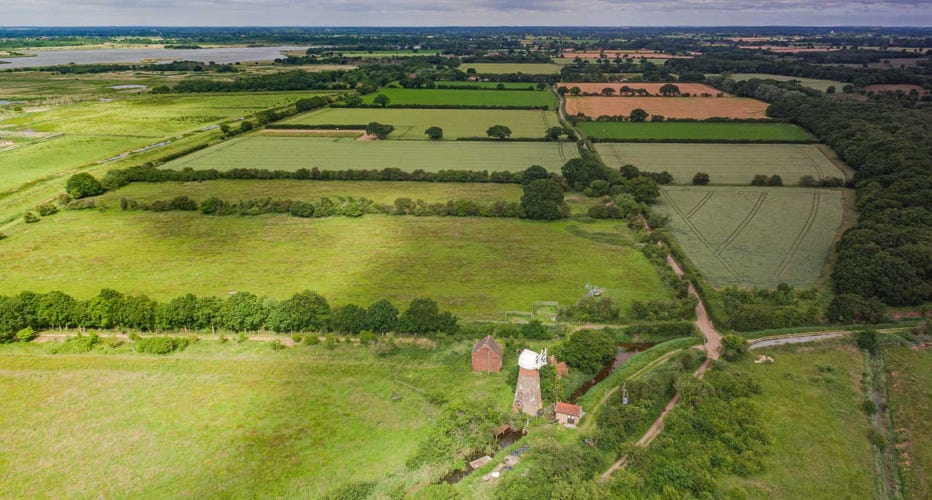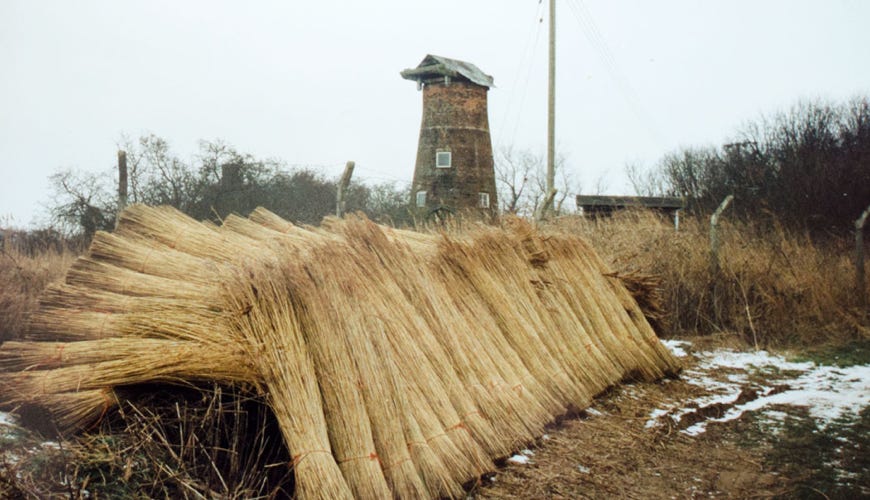
Drone photo by Graeme Taplin

Photo by George Newman (1996)
Stubb Mill was built around 1800 to drain the surrounding marshes. It was about 30 feet tall with cloth sails and a scoop wheel. Somewhere between 1820 and 1840 the tower was raised by about 7 feet so that it could carry larger sails. The new sails were patent double shutter with striking rod and chain. The mill lifted water from the basin into the outlet, which discharged into Meadow Dyke. The millman and his family lived in the mill and the adjacent single storey building, which was thatched. They occupied the first and second floors of the mill, with a fireplace and chimney on the first floor. The cottage was built in the early 1900s. The earlier dwelling was used as an outbuilding, had its thatch replaced with pantiles and a stable and cartshed added. The building containing the washhouse and dairy was probably built at around the same time.
Our “Voice”, Harry Nudd, took on the job of minding both Stubb Mill and Eastfield Mill when he was 18 or 19, and became the third generation of his family to work the mill.
"I had to walk down to Eastfield pump twice a day, sometimes more often, to grease up and clear the weed screen. There was a red light on the outside of the pump house that lit up when the pump was running. We could see this from home. If the light flashed on and off it meant that the pump was cutting in and out because the screen was weeding up so water could not get through. I had to go and clear it otherwise the motor would have burned out. I also had to start up the diesel engine to run the pump at home when needed. I had to stay in the pump house or nearby while it was running as the engine was due for an overhaul and the valves kept sticking. It was after harvest, there was a lot of water about and both pumps were running long hours. One day my brother came into the pump house and found me sitting on a box in the corner asleep."
